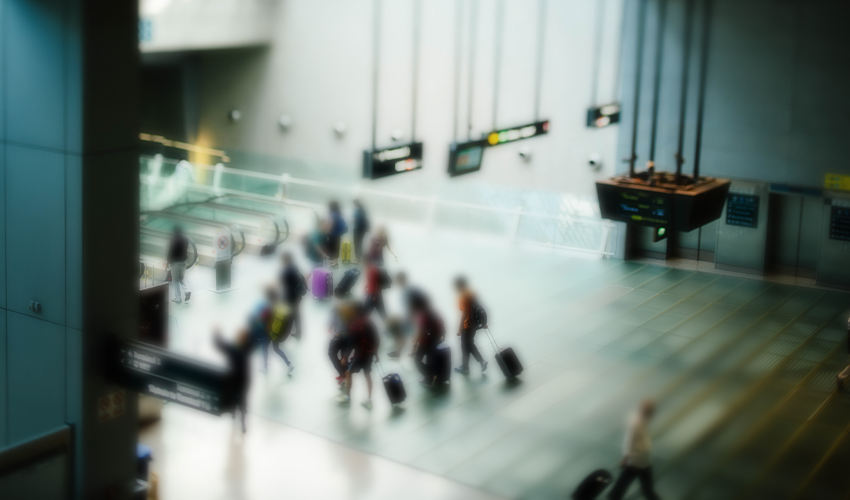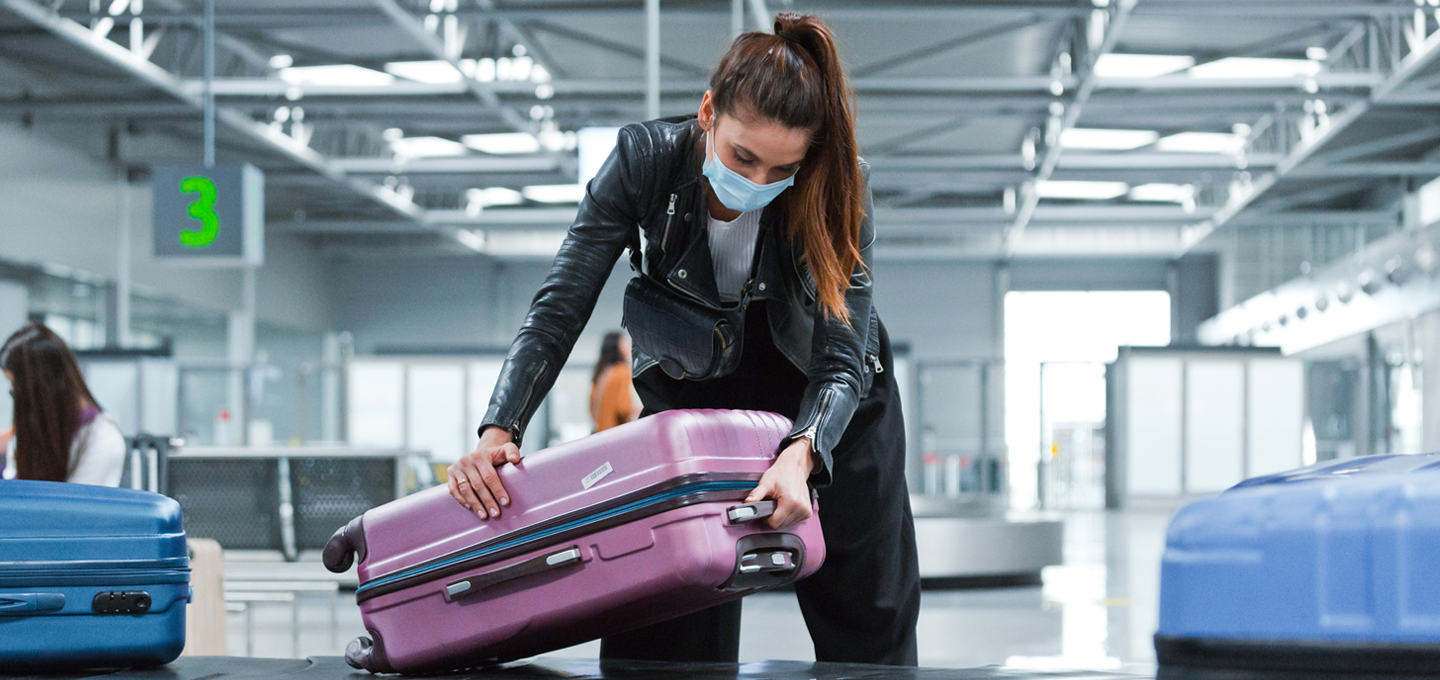Strict border restrictions brought by the pandemic forced travelers to cancel their vacations. With bucket-list destinations still unchecked, there is great expectation to be able to freely fly again this summer. The advent of vaccine passports and the widespread of vaccination seems to be increasing public confidence. In a latest traveler sentiment survey, 81% of the respondents expressed their plan to take to the skies in the next six months. Moreover, recent news reported a surge in bookings among British travelers. Spain appeared as the favorite destination with an increase of 170% in searches. This is an undoubtedly a positive development for the aviation industry. It also, however, poses challenges to operators who will have to distribute more people across terminals in the face of tight Coronavirus regulations. Especially critical is the baggage claim area.
Luggage collection has always been one of the main bottlenecks within airport operations. Having dozens of travelers standing around the baggage carousels at the same time was always a concern in terms of the passenger experience. Today, this problem goes far beyond a matter of operational productivity and quality service. Preventing overcrowding is a must to regain passengers. Health experts agree that protective measures will still be needed until herd immunity is achieved. Airports will need to adjust their processes and resources to enable a safer bag claim. But what happens when these necessary safety regulations lead to new capacity limitations? In this blog post, we will discuss some solutions that can be implemented in this area.
Optimizing passenger flows at the baggage claim area
1. Passenger-oriented solutions to reduce clustering at carousels
When we think about the problem of crowding, the first idea that comes to mind is space. Having a baggage claim area that enables good circulation based on average occupancy levels is necessary to reduce congestion. In some cases, installing additional retrieval systems or changing the design layout of the existing ones could speed-up things. However, this approach might be unproductive following the particularities of each airport infrastructure and given the current financial limitations.
As an alternative, operators can look at digital solutions that provide information to passengers on their bag dispatch. After scanning a QR code, users are notified directly on their phones when their luggage is ready to be picked up. That gives them some freedom to wait in less congested zones. This measure could be combined with restricting access to the baggage claim area during demand peak-hours. In fact, this terminal point is frequently used as a meeting place for travelers and their greeters. Allowing only ticketed people to enter it could help prevent potential overflow.
2. Signalization as a kind reminder to maintain safe distance
After a long flight and with the desire to continue their journey straight away, travelers may forget to maintain safe distancing at the baggage claim area. Floor markers and sticker placements on the walls can serve as friendly reminders. An advantage of these solutions is their easy implementation, even if it is on short notice. Crucial here will be to convey the message as clear as possible and to make the signage readily noticeable.
However, it is not advisable to rely only on this method. Since passengers are often exposed to several sources of information at once, they may not be fully aware of these visuals. By allocating staff to the area, managers can control the effectiveness of this measure and clarify any passenger question popping up. For instance, if dispatchers assign multiple belts for one flight, personnel can orientate travelers accordingly. Another strategy is placing bags on the conveyor belt with enough spacing so that when travelers retrieve them, they are already standing at an adequate distance.

3. Adaptative passenger forecasting
From the check-in to the baggage claim area – any good plan starts with an accurate forecast. Data on flight schedules and load factors are essential inputs to key airport processes. Then it enables a better understanding of passenger density at different levels. If not giving demand forecasting the necessary thoroughness, unreliable calculations can lead to issues such as:
- Inefficient queue management
- Congestion across terminals
- Unproductive staff and equipment allocation
- Increased wait times
- Poor passenger satisfaction
Some tools improve data collection and support situation-aware decisions. These techniques are commonly based on a detailed analysis of historic traffic and airline capacity. This approach works well, but the problem arises when an event disrupts the patterns. The high volatility caused by the Coronavirus forces managers to take a more dynamic view to forecasting. That comes in part from the fact that people still tend to buy their flight tickets closer to the departure date. By adjusting estimations with real-time data, changes in operational plans can be done more optimally.
4. Timely resource allocation
Besides the importance to understand and adjust passenger flows, airports have to rethink the allocation of terminal resources. To maximize separation of travelers at the baggage claim area, we can assume that additional space and resources may be required than usual. The Airports Council International estimated the impact of the implementation of COVID-19 measures on terminal capacity – a reduction between 20 to 40%. With such constraints, wait times could potentially increase at this point. Solutions based on artificial intelligence can prevent this by enabling faster and more efficient resource management.
We normally associate resource management with optimizing investments to accommodate more travelers and flights within airport facilities. Today, the focus is on how to spread traffic to successfully comply with physical distancing while ensuring assets are used evenly. Dedicated software offers the tools to assign flights flexibly to baggage carousels on the day of operations. Based on planned activities and real-time information, bottlenecks can be managed proactively. For example, when a full flight arrives, the system identifies if additional baggage belts are available so that multiple conveyors can be assigned to it. This might not be possible on a busy day. Here the tool suggests the best allocation combination so that flights arriving at the same time do not get adjacent carousels.
Driving a smoother and safer luggage-retrieval process
After challenging months, the public is looking forward to flying again. As a gateway to the world, airports are more committed than ever to ensuring a safe journey. Efforts to mitigate risks continue changing air travel as we know it. Social distancing, enhanced sanitation, etc. are likely to remain for a while. Therefore, managers should look at long-term solutions to minimize their impact on operations. Otherwise, extended processing times could further exacerbate the already well-known problem of crowding in the baggage claim area.
The enforcement of COVID-19 regulations provides an opportunity to reconsider and improve things. Solutions range from very basic ones such as using signaling to opting for advanced technology. Thanks to artificial intelligence and machine learning, it is now possible to optimize, manage and control all baggage carousel resources based on traffic volumes. Travelers can be so spread out that even separations between flights from high-risk and non-high-risk areas are possible. Technology to enhance resource management is a great ally for airports these days. Then, an adequate use of assets contributes also to their financial stability which is crucial for their recovery.





0 comments on “Ready For the Ramp-up: How To Avoid Crowding At The Baggage Claim Area”